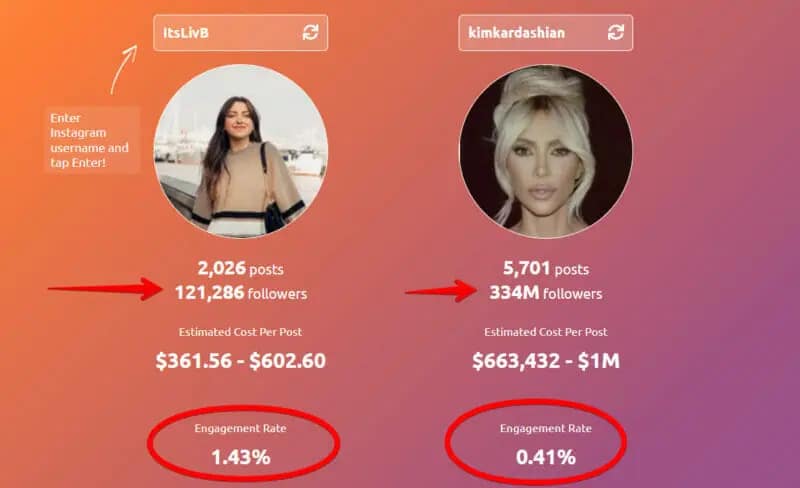Amazon’s way ahead of the marketing game, which is why they launched the Amazon Influencer Program a few years ago.
The Amazon Influencer Program is a cost-efficient marketing solution for sellers. It allows them to delight their regular customers, but also to reach new audiences on and off Amazon.
This makes the program a more focused ad tool, compared to the broader Amazon marketing strategies.
In this post, we’ll discuss how you can use the Amazon Influencer Program to drive product visibility and sales.
How the Amazon Influencer Program Works
The Amazon Influencer Program encourages brands to partner up with popular influencers. Such personalities can then recommend products to consumers, and earn commissions for promoting sales.
Enrolled influencers can create their own Amazon storefronts, where they can post the products that they wish to endorse and recommend to their followers.
Amazon can also take an influencer’s content and display the most relevant results to customers. If a user wants to learn more about a specific influencer, they can click on their name and visit their storefront.
Now, how much does an Amazon influencer make? That’s one of the program’s perks. Influencers earn a commission for each sale they encourage. All that’s needed is for a purchase to be made using a link on the storefront. Then the influencer can earn a sales fee.
In this way, influencers can help Amazon brands drive sales.
Who Qualifies for the Amazon Influencer Program?
Anyone can sign up for the Amazon Influencer Program. To get started, however, an influencer must first see if they qualify. Although Amazon does not list specific evaluation criteria, there are 2 key factors to consider:
- Social Media presence. Influencers should own an active YouTube, Twitter, Facebook or IG account
- Substantial fanbase. There’s not a specific number of fans required. However, Amazon favors influencers who have a large social media following.
- High engagement rate. The program favors influencers that communicate a lot with followers. They also select influencers that post relevant content on a regular basis.
Interested parties should submit the social media account on which they have the largest follower base. To check qualifications, influencers can go to the program’s homepage and click on ‘Get Started’.
Note that YouTube and Twitter accounts get approval in real-time. Conversely, Facebook and IG approval can take up to 5 days. If they don’t qualify right away, influencers can return in the future to check again, since eligibility requirements may change over time.
Once influencers are in the program, they can start curating their page. To do so properly, it’s important to check the FAQ section to avoid mistakes. Influencers must also comply with Amazon’s community guidelines.
Amazon Influencers vs Amazon Associates
The Influencer Program is an extension of Amazon Associates, also known as Amazon Affiliates. This program also drives leads into Amazon, but it focuses more on sharing links through websites, such as blogs.
Both types of users can build links and shopping ads, and then integrate them into their own platforms. However, the Amazon influencer program focuses on channeling the power of social media influencers.
As we said, influencers can set up dedicated storefronts to showcase the items they promote. The program also provides influencers with a vanity URL. This is to help them redirect users from social media to Amazon.
Affiliates must work with Amazon to match product selections to their webpage content. In contrast, influencers can choose the products they wish to promote. Thus, they have more control in promoting products, based on their audience’s interest.
Who is Considered an Influencer?
An influencer is an established authority on a social media platform, and within a specific niche audience. This gives them the ability to ‘influence’ the purchase decisions of their followers.
Sellers would therefore want to have such allies. Influencers can promote almost any product, and encourage people to buy it. Thus they can help brands promote and sell more on Amazon.
How Many Followers Do I Need for the Amazon Influencer Program?
As we said above, there isn’t a specific number of followers that an influencer needs to qualify for the Amazon Influencer Program. This is because quality is better than quantity.
What matters most is an influencer’s engagement rate. That is, if they can capture the audience’s interest in specific products. Considering this, micro-influencer might be the best fit for the program.
Micro-influencers are personalities with 1,000-100,000 followers. What they lack in reach, they make up for in engagement and credibility. Plus, they are more niche focused, which helps them build authority on specific subjects.
Users tend to trust micro-influencers because they’re passionate about their content. This also translates to the stuff they use. Thus, followers will trust their product recommendations.
That’s one key aspect about the Amazon influencer program: honesty. The marketplace wants influencers who will help customers discover new products, and also provide honest opinions on them.
How Can Amazon Sellers Take Advantage of the Amazon Influencer Program?
SellerApp states that 6% of 3P Amazon sellers collaborate with influencers. Also, a third of them expect to drive their reach via influencer marketing. This shows how much the Amazon influencer program can transform the way shopping is done on Amazon.
Some influencer pages are evolving into places where people go to see new and interesting items to buy. Users might also make it a habit to check out an influencer’s Amazon page when they see them using an item, expecting to be able to find it there.
Sellers can also use influencer pages to research what items to sell on Amazon. Brands can also team up with leaders in a specific industry to share their brand’s products and communicate with a select audience.
Merchants can then reach their target audience in a more organic and meaningful way. Influencer marketing became a $16.4 billion industry in 2022 because this type of approach works.
Consumers trust influencers when making decisions to purchase a certain product. In fact, Online shoppers look for product recommendations from influencers almost as often as they listen to friends’ opinions.
This means that influencers can be a great help to brands that want to expand their reach and increase Amazon sales.
Most Amazon sellers and brands are better off working with micro-influencers, though. Here’s why:
Affordability
Working with influencers can get very expensive depending on who you choose. Most influencers are generally affordable. This is what nano- and micro-influencers normally cost, depending on the platform:
- Facebook – $25-$1,250 per post
- Instagram – $10-$500 per post
- Twitter – $2-$100 per post
- YouTube – $20-$1,000 per video
- TikTok – $5-$125 per post
The final rate depends on the influencer’s reach and engagement rate. Influencers also consider the number of posts to publish, and the cost of creating the content.
Note, however, that some influencers also charge per view. For example, a YouTube influencer could charge $50-$100 per 1,000 views.
Engagement
A sponsored post from a micro-influencer can really help boost Amazon sales. Micro-influencers have social media’s biggest celebrities beat. Those with around 1,000 followers have a higher engagement rate than those with over 100,000 followers.

It appears that smaller followings and humble backgrounds make micro-influencers more approachable and relatable. They’re also more likely to interact with followers. So, posts about an Amazon store or product will get more attention and engagement.
Conversions
Users may come to trust a brand because of its relationship with a particular influencer. This can help increase the conversion rate. Almost 60% of consumers bought a product in the last six months because of an influencer’s recommendation.
Users go to influencers when they want product recommendations. Plus, people who learn about a product from a micro-influencer are more likely to make a purchase.
Followers know the influencer, so they trust the source. They know that micro-influencers stake their reputations on what they endorse. It’s not likely that they’ll back products that they don’t truly like and use.
Niche Audiences
Micro-influencers tend to be more niched, and so are their followers. You can therefore find at least one personality who already has a following of the exact audience demographic you wish to target.

This audience will be highly engaged on that topic, and the influencer will be an expert in that chosen niche. Users also trust them because of the relationship they’ve built over the years.
How TikTok Can Increase Brand Awareness and Amazon Sales
TikTok is now a significant player in the social media game. More and more brands are using TikTok to reach and engage with customers. Amazon brands can also leverage this social platform to drive brand awareness and increase sales.
This represents a great opportunity for sellers to tap into this audience, which tends to make more emotional than logical purchase decisions.
Appeal and Audience
Within a year of its creation, TikTok generated more than 100 million global users. The app quickly increased in popularity and got more downloads than Instagram, WhatsApp, and YouTube in 2018.
By July 2019, TikTok had over 500 million total installs on Google Play. It now has more than 30 million monthly active users in the US alone.
TikTok users constantly create videos, and share them on other social media platforms. Users can also interact with each other and engage in challenges and duets. In the US, TikTok has enjoyed:
- 6% of 46 million global app installs in 2019.
- A user base of mostly 18- to 24-year-olds (42%), followed by 13- to 17-year-olds (27%).
TikTok Shopping
TikTok has tested and rolled out eCommerce features over the past years It has a Shop Now call-to-action where ad revenues are split between TikTok and the creator. Creators can also include eCommerce linked hashtags, which redirect users to shopping sites.
Now, TikTok users rely on this app for entertainment. Keeping this in mind, brands can create marketing strategies that lead users to click through to the commerce side of the platform.
And it works! Back in 2020, brands like I Dew Care and I’m Meme used TikTok to send shoppers to their Amazon stores, linked in the popular #amazonfinds hashtag.
Following this example, almost any brand can benefit from TikTok’s marketing features. With some creativity, great content, and possible collaborations with TikTok influencers, the potential is enormous.
Final Thoughts
The Amazon Influencer Program can help you get a real leg up over the competition. You can set up influencers with their own Amazon storefront and an exclusive URL to showcase your catalog.
With all the offers on Amazon, there’s a great chance that you’ll find an influencer ready to promote your products. This makes it easy for almost any influencer to participate. So, the program represents a huge opportunity for sellers to advertise on and off the marketplace.
Plus, sellers with a strong social media presence can also become influencers themselves. You could start earning commissions by promoting your own products! This is a double whammy with an additional way to attract leads, without spending on ads or endorsements.
Author




